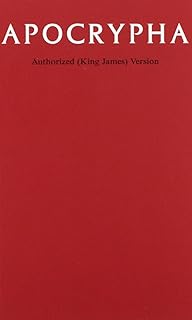This anthology of ancient nonbiblical Christian literature presents informed introductions to and readable translations of a wide range of little-known apocryphal texts, most of which have never before been translated into any modern language. An introduction to the volume as a whole addresses the most significant features of the writings included and contextualizes them within the. These same books (Apocrypha) were not found in the Hebrew canon, the writers of the New Testament; though they quote from the Septuagint, do not quote from the Apocrypha. The period between Testaments, between B.C. 425 and the time of Christ, gave rise to additional writings, which included the history of the Maccabees among others. New Testament Apocrypha III - REJECTED SCRIPTURES The Gospel of Philip Translated by Wesley W. Isenberg A Hebrew makes another Hebrew, and such a person is called 'proselyte'. Burke & Long, eds., New Testament Apocrypha, first galley proofs February 19, 2016 1:23 PM Burke & Long, eds., New Testament Apocrypha, first galley proofs February 19, 2016 1:23 PM collections and because it is still very unclear how much of an improvement the latter is, given its retention of the highly problematic word “apocrypha.
The NET Bible was begun with the intention of ministering to as many people as possible by making the best study Bible ever written available for free on the Internet. Many website visitors will notice that draft versions of various books of the Apocrypha are now also available on the website. Since these are not considered canonical by a majority of Protestant churches, an explanation as to why we are including these books is warranted. Inclusion of the Apocrypha in future editions of the NET Bible is based on a desire to minister to as many different Christians in as many different Christian traditions as possible. Of all the major Christian traditions, the Protestant tradition is the only one to exclude all the books of the Old Testament Apocrypha from the canon. The Roman Catholic Church and the Orthodox Churches (both Greek and Russian) accept some of them, although not the exact same ones. Our intention is to impact the body of Christ as a whole, not simply Protestant believers, and for the NET Bible to be acceptable to those different church traditions, the Apocrypha will be included.

By doing so we are not making any claim to canonical status for these books. We are simply acknowledging that they are an important part of many church traditions and that they have inherent value for understanding the historical and theological background to the New Testament. The Apocrypha provides understanding of the intertestamental period, and it provides understanding of the Judaism of Jesus’ day. To understand the New Testament, both of these areas must be understood well. Giving people access to the Apocryphal books with the same depth of notes as in the NET Bible Old and New Testament will help Bible readers understand the Old and New Testaments better than they have before.
Although no final decisions have been made, the printings of the NET Bible which include the Apocrypha will vary much as current Bible printings do. This is reflective of the different status accorded the books within each Christian tradition. Some editions of the NET Bible will be printed without the Apocrypha at all. In other editions of the NET Bible these books will be placed between the Old and New Testaments in their own distinct section just as a number of other Protestant Bibles have done (for example, the New English Bible, Revised English Bible, New Revised Standard Version, and the King James Version for much of its history). It is also likely that some editions of the NET Bible will be printed with the books of the Apocrypha in the order used by Roman Catholic and Orthodox Churches. By providing these different editions, the editors and translators of the NET Bible desire to make the NET Bible useful to Christians in all traditions.
.djvu/page113-1024px-The_Holy_Bible%2C_containing_the_Old_%26_New_Testament_%26_the_Apocrypha_(Volume_3).djvu.jpg)
Schneemelcher New Testament Apocrypha
Many Protestants oppose the inclusion of the Apocrypha in the Bible, arguing that mere inclusion of the Apocrypha in the NET Bible is an implication that it is inspired scripture. A quick look at the NET Bible and many other published Bibles will show that Bibles include a great deal of material between their covers which would never be considered scripture: maps, study helps, applicational notes, poetry, etc. The NET Bible itself includes thousands of notes which explain the Biblical text, but they are not regarded as scripture. The guiding rule for inclusion of extra material is that it is material the editors believe will be helpful in understanding the inspired text of the Bible, and that is the attitude the NET Bible translators and editors are taking toward inclusion of the Apocrypha. These books are important for understanding the historical and theological background to the New Testament, and this is a worthy reason to include these books as a separate section within the pages of the NET Bible.
New Testament Apocrypha Iiirejected Scriptures King James Version

New Testament Apocrypha Iiirejected Scriptures Chronological
The Editors and Translators of the NET Bible

